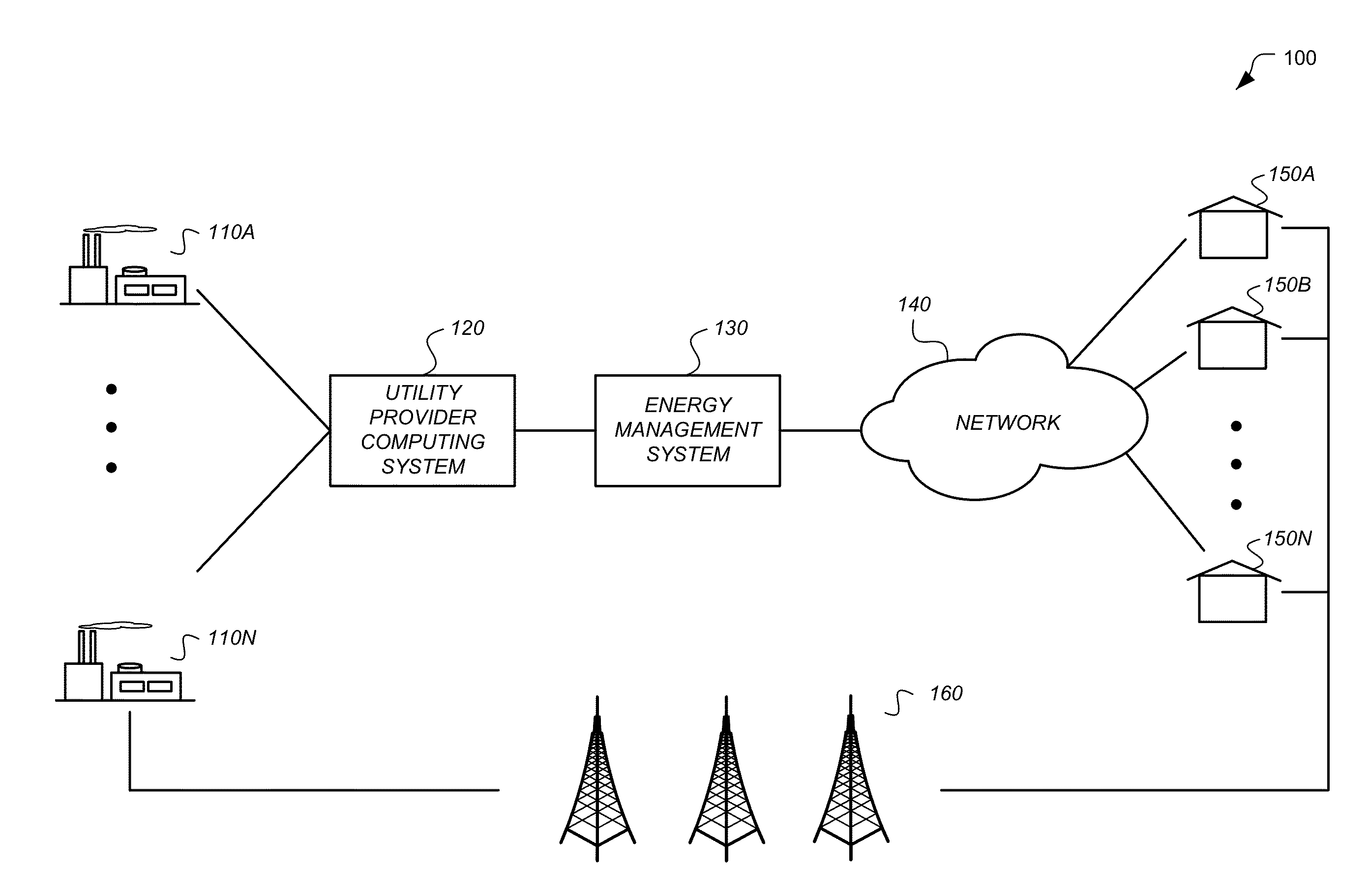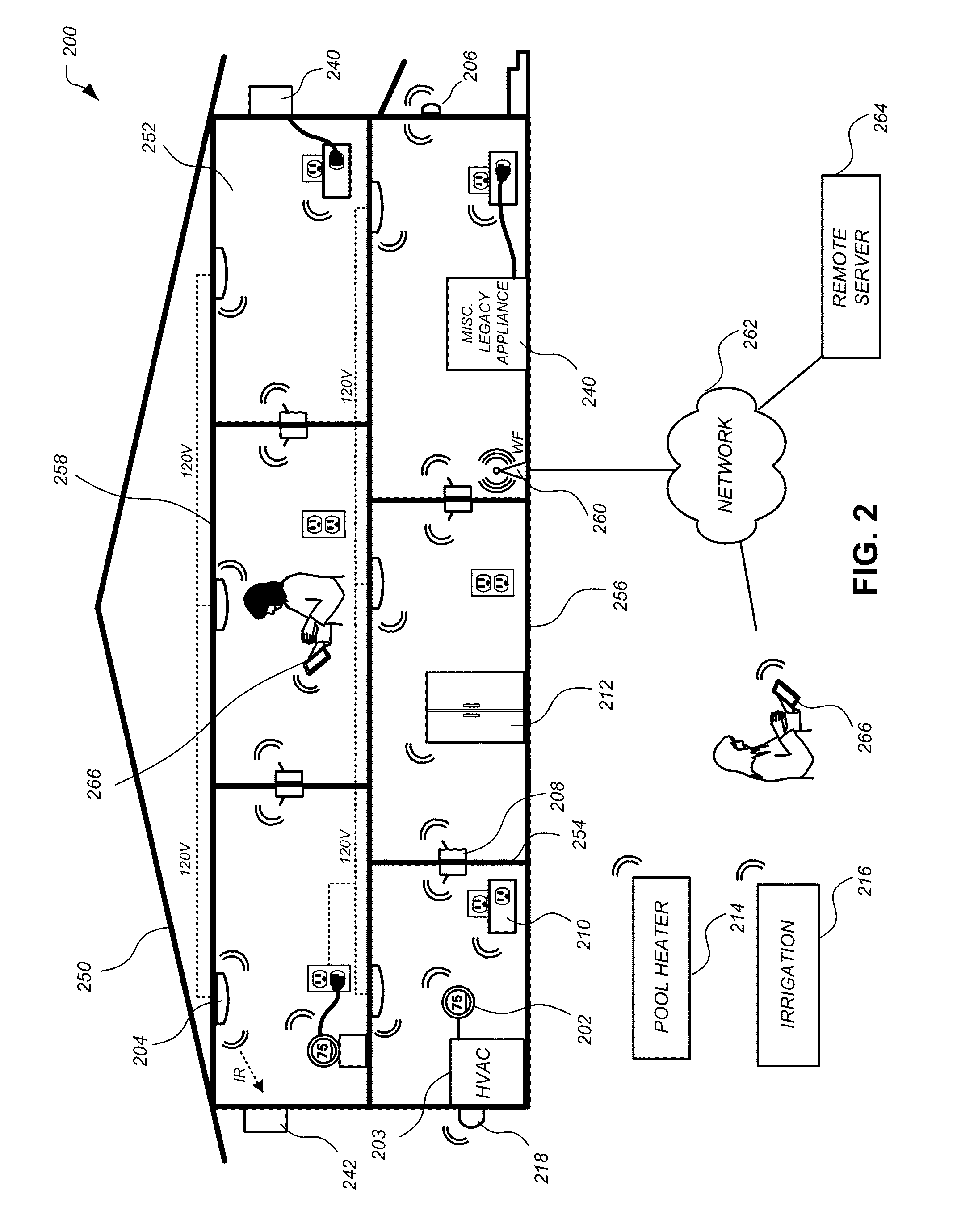Systems, apparatus and methods for managing demand-response programs and events
a technology of demand response and computer program, applied in the field of system, apparatus and methods, can solve the problems of increasing demand, increasing costs, and significant variations in electricity demand
- Summary
- Abstract
- Description
- Claims
- Application Information
AI Technical Summary
Benefits of technology
Problems solved by technology
Method used
Image
Examples
Embodiment Construction
[0055]Embodiments of the present invention generally relate to techniques for managing demand-response programs and events. The entities in a system for managing demand-response programs and events typically include a utility provider that provides electrical or other forms of energy from a power source (e.g., an electrical generator) to individual's homes or businesses. The individuals typically pay for the amount of energy they consume on a periodic, e.g., monthly, basis. In many embodiments an energy management system is disposed between the utility provider and the individuals. The energy management system operates to intelligently and effectively shift energy consumption of the individuals from one particular time period to other time periods. Such energy shifting is usually performed so as to shift energy consumption from a high energy cost period to a low energy cost period. In the case of DR events, energy is shifted from the DR event period to time periods outside of the DR...
PUM
 Login to View More
Login to View More Abstract
Description
Claims
Application Information
 Login to View More
Login to View More - R&D
- Intellectual Property
- Life Sciences
- Materials
- Tech Scout
- Unparalleled Data Quality
- Higher Quality Content
- 60% Fewer Hallucinations
Browse by: Latest US Patents, China's latest patents, Technical Efficacy Thesaurus, Application Domain, Technology Topic, Popular Technical Reports.
© 2025 PatSnap. All rights reserved.Legal|Privacy policy|Modern Slavery Act Transparency Statement|Sitemap|About US| Contact US: help@patsnap.com



